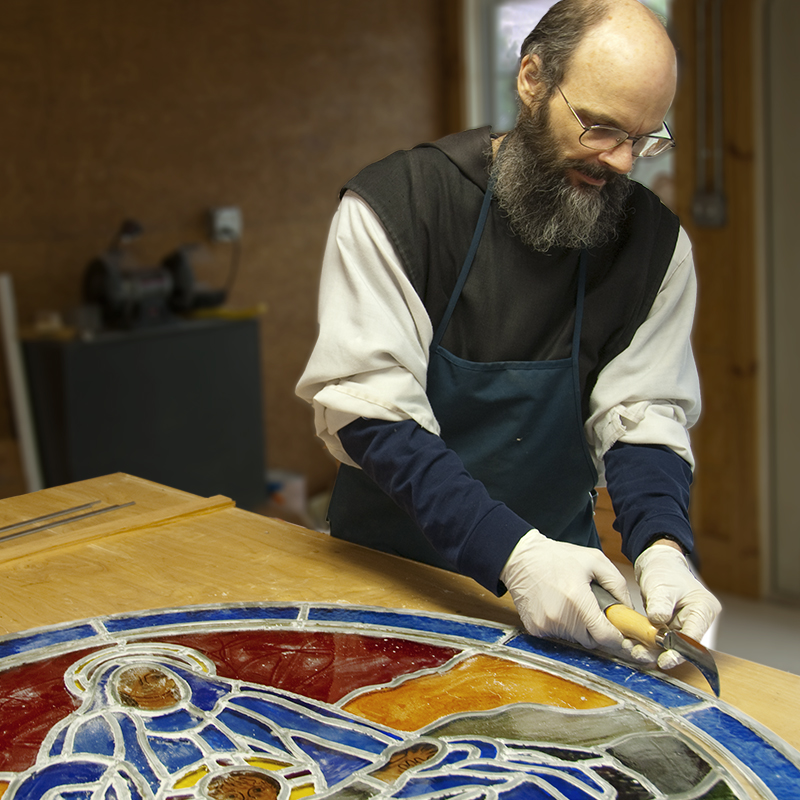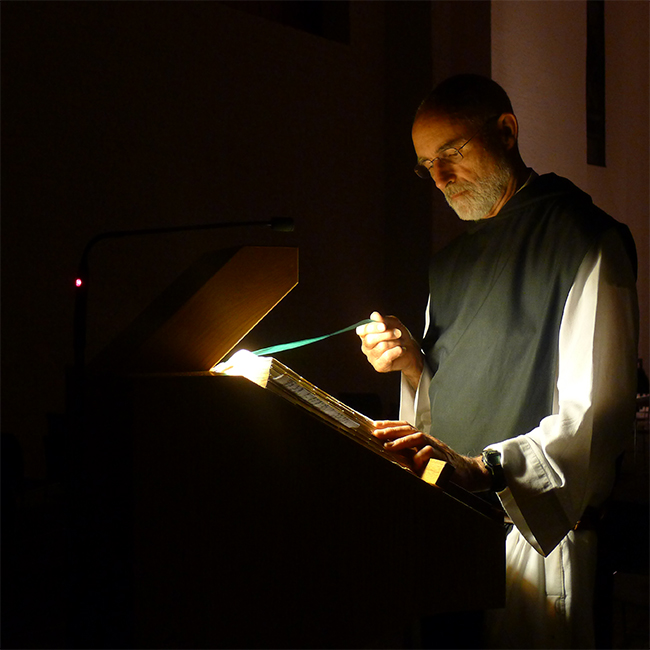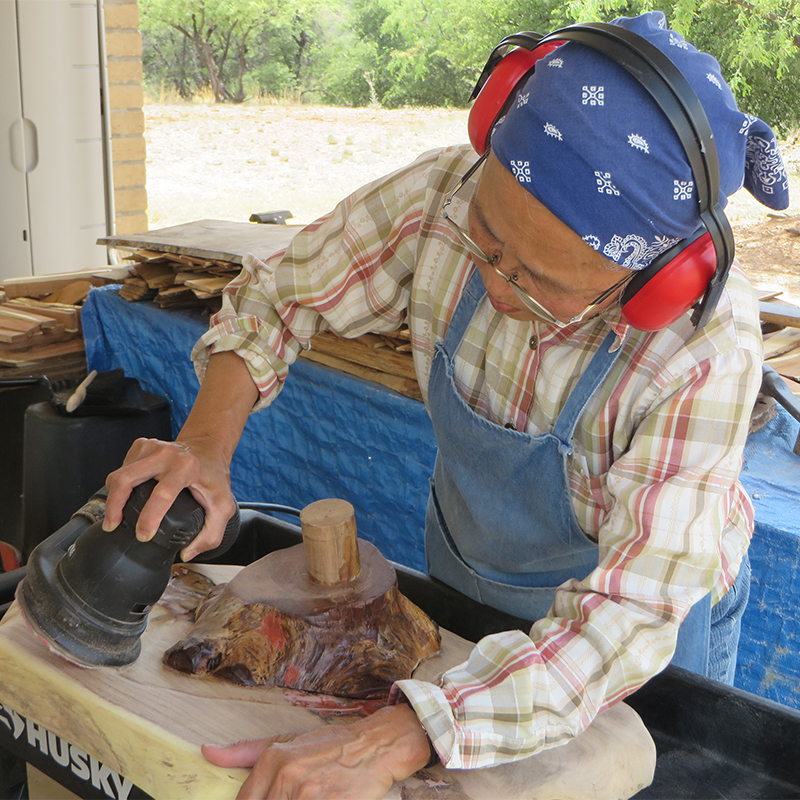Distinct Daily Rhythms
Life in a Trappist monastery follows a steady rhythm punctuated by frequent prayer and worship, the study of sacred texts, and simple, honest work that sustains our earthly mission. Each activity enriches the other, keeping our hands, hearts and minds fully alive—so that we are always ready to listen and respond to God’s call.
Praise of Bells. Throughout the day, the divine call of God finds expression in the sound of bells that carry us to prayer, spiritual reading, manual labor, the company of our brothers and sisters, and to retire at the day’s end.
Keeping Vigil. Rising before dawn, we foster a joyful anticipation of the Lord’s return in our hearts. Maintaining silence and refraining from work during these nocturnal hours known as “The Grand Silence”, we keep vigil alone yet in loving solidarity with brothers and sisters around the world.
Lectio Divina. Each day we devote time to reading and meditating on the Word of God, a practice called Lectio Divina. This awakens heartfelt prayer and the opportunity to encounter Jesus and surrender ourselves to silent loving contemplation of the mysteries of Christ.
Eucharist Celebration. Our community comes together at Mass to celebrate our unity in faith, with the whole church and body of Christ. We offer the Eucharist as a powerful source of healing and reconciliation for the painfully divided human family.
Liturgy of the Hours. Seven times a day, we interrupt our activities, gather in church, sing praise to our Creator and listen prayerfully to the Word of God. This exercise, also called the Divine Office or Opus Dei, consecrates each successive phase of the day, revealing deeper meaning so that we may return this as a gift to God.



Manual Labor. Engaged in daily tasks that support life in a monastery, we recognize how the Lord carries on His work of creation through our hands. Manual work also keeps us mindful in solidarity with men and women all over the world who must labor to earn a living.
Monastic Interval. Living in fidelity to a rule of life inspired by the Gospel, we discover an interior freedom in holy leisure—periods of quiet between daily exercises given to intimate experience of God’s friendship in prayer and interaction with our brothers and sisters in the monastery.
Retiring for the Night. As darkness falls, each returns to his or her cell grateful for having spent another day in the Lord’s service. Entrusting ourselves to the Lord’s protection during the night, we anticipate that new day which will be a sign of Christ’s resurrection and pray: Into your hands O Lord, I commend my spirit!